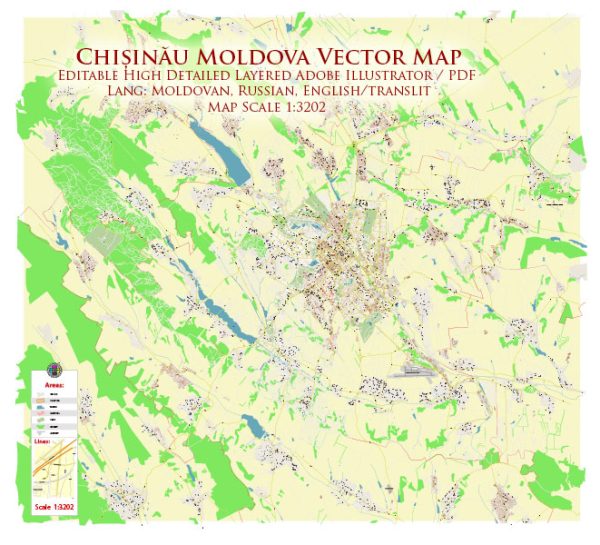Chisinau, the capital and largest city of Moldova, has a rich history of urban development that spans several centuries. Here’s a brief overview of key points in the history of Chisinau’s urban development:
- Early Settlements (15th-18th centuries):
- The area around present-day Chisinau has been inhabited since ancient times, with evidence of early settlements dating back to the 15th century.
- It was part of various empires, including the Ottoman and Russian Empires, before becoming a part of the Principality of Moldova.
- Russian Influence (19th century):
- Chisinau’s modern history begins in the early 19th century when it came under Russian control as a result of the Russo-Turkish War (1806–1812).
- The city’s development was significantly influenced by Russian architectural styles, and many of the buildings from this period still stand today.
- Economic Growth and Industrialization (19th-early 20th centuries):
- Chisinau experienced economic growth and industrialization during the 19th century, becoming an important economic and cultural center.
- The city’s layout and infrastructure began to evolve with the construction of new buildings, roads, and bridges.
- Soviet Period (20th century):
- Chisinau, like the rest of Moldova, became part of the Soviet Union in 1940 following the Molotov-Ribbentrop Pact. It continued under Soviet rule until gaining independence in 1991.
- During the Soviet period, the city underwent significant urbanization and modernization, with the construction of large residential blocks, government buildings, and cultural institutions.
- Post-Soviet Independence (1991-present):
- After gaining independence, Chisinau faced challenges associated with the transition to a market economy and the establishment of democratic governance.
- The city has seen ongoing urban development, with efforts to modernize infrastructure, attract investment, and preserve historical landmarks.
- Architectural Heritage:
- Chisinau is known for its diverse architectural styles, ranging from classical and neoclassical buildings to Soviet-era structures.
- Key landmarks include the Nativity Cathedral, Triumphal Arch, and various theaters and museums.
- Contemporary Challenges and Developments:
- In recent years, Chisinau has faced challenges related to urban planning, transportation, and environmental issues.
- Efforts have been made to address these challenges and enhance the quality of life for residents, including projects aimed at improving public spaces and transportation infrastructure.
Overall, Chisinau’s history of urban development reflects the city’s diverse cultural influences and its evolution from a regional center to the capital of an independent nation. The city continues to grow and adapt to the changing needs of its population in the 21st century.


 Author: Kirill Shrayber, Ph.D.
Author: Kirill Shrayber, Ph.D.